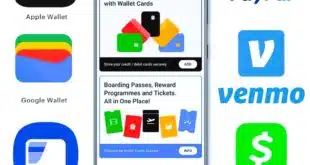Personalized financial-management tools and digital assistants will provide the pathway for banks and card issuers to differentiate their mobile apps or Web sites from those of competitors and drive adoption and usage, according to a new report from J.D. Power.
The best opportunities for card issuers will come from offering consumers digital tools that help them with tracking spending, budgeting, and ways to boost their credit scores, says Jennifer White, senior director of banking and payments intelligence at J.D. Power.
“When it comes to common features, such as viewing account balances or mobile check deposit, the opportunity to create a point of differentiation is narrow because the best practices in this area of the digital experience have been widely adopted by banks and card issuers—there is not a lot of room for innovation,” White says. “Providing personal finance-management tools as part of the digital experience is where the opportunity for innovation exists.”

J.D. Power gathered the data across four studies that track overall customer satisfaction with banking and credit card providers’ digital offerings, which include mobile apps and online banking. J.D. Power conducted the studies in February and March, gathering 17,843 responses from retail bank and credit card customers in the United States.
Digital tools that help consumers manage spending, save money, borrow, and plan their financial future are where personalized experiences can have the most impact, Power’s research indicates. For example, data analytics can help consumers better understand and manage their spending by breaking it down on a monthly and line item-basis, according to White.
“Helping consumers understand their spending behavior can help them set realistic budgeting goals as well as understand where they are spending their money, such as on multiple streaming subscriptions,” says White.
Another personal finance tool banks and card issuers can offer is credit score management. The key is to go beyond providing access to a user’s credit score to include an explanation of the elements used to build the score. Another key factor is providing tools that show consumers how reducing debt or eliminating late payments can impact their score.
“Most banks already offer some personalized financial-management functionality in their digital experiences, but there is still a great deal of variability when it comes to the type of tools offered,” White says.
Virtual digital assistants can also provide a point of differentiation for mobile apps and Web sites, the study indicates. One advantage of virtual assistants, or chatbots, is that they can quickly handle simple tasks such as providing a customer’s account balance or details about the last purchase. Implementing Generative artificial intelligence working through chatbots can also personalize customer experiences, White adds.
The most common functions executed through virtual assistants include obtaining checking-account balances, making payments, finding transactions, and transferring money, according to J.D. Power.
As for customer satisfaction with mobile-banking apps, Capital One ranks highest with a score of 768 out of a possible 1,000 points, followed by Bank of America Corp. (662) and J.P. Morgan Chase (656).
Among credit card apps, American Express Co. and Bank of America tied for the highest customer-satisfaction ranking with scores of 675, followed by Discover at 673.
TD Bank, at 672, topped the list in customer satisfaction with online banking, followed by Capital One (671) and Wells Fargo (668).
AmEx ranked highest in online credit card satisfaction with a score of 671, followed by Discover (668) and Wells Fargo (664).




